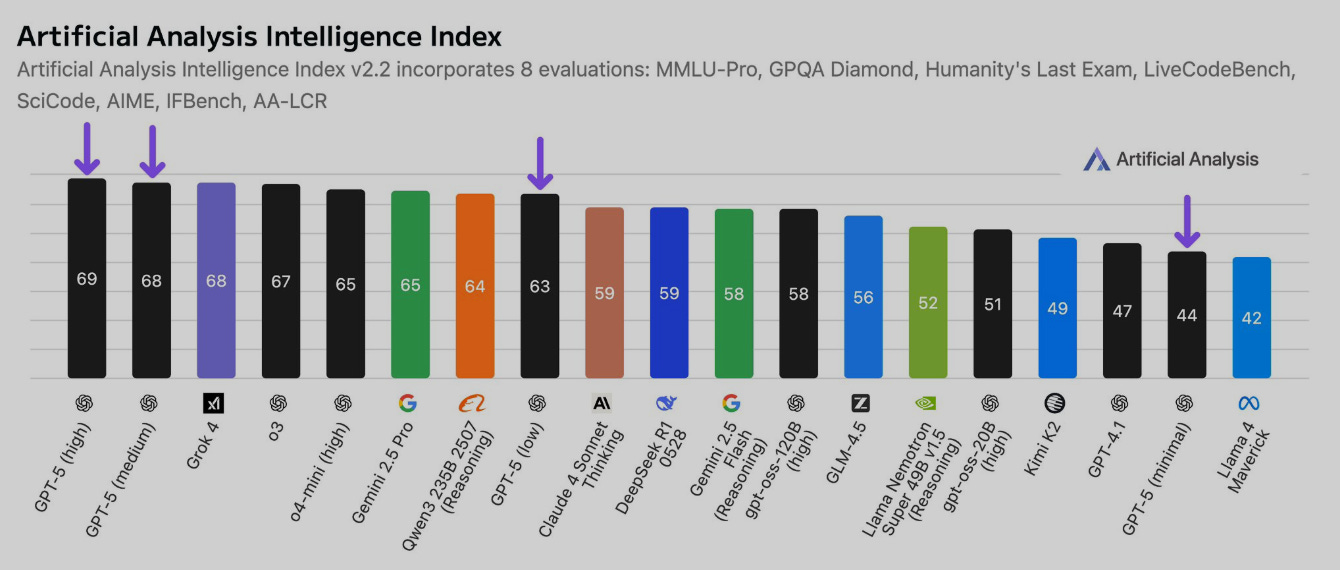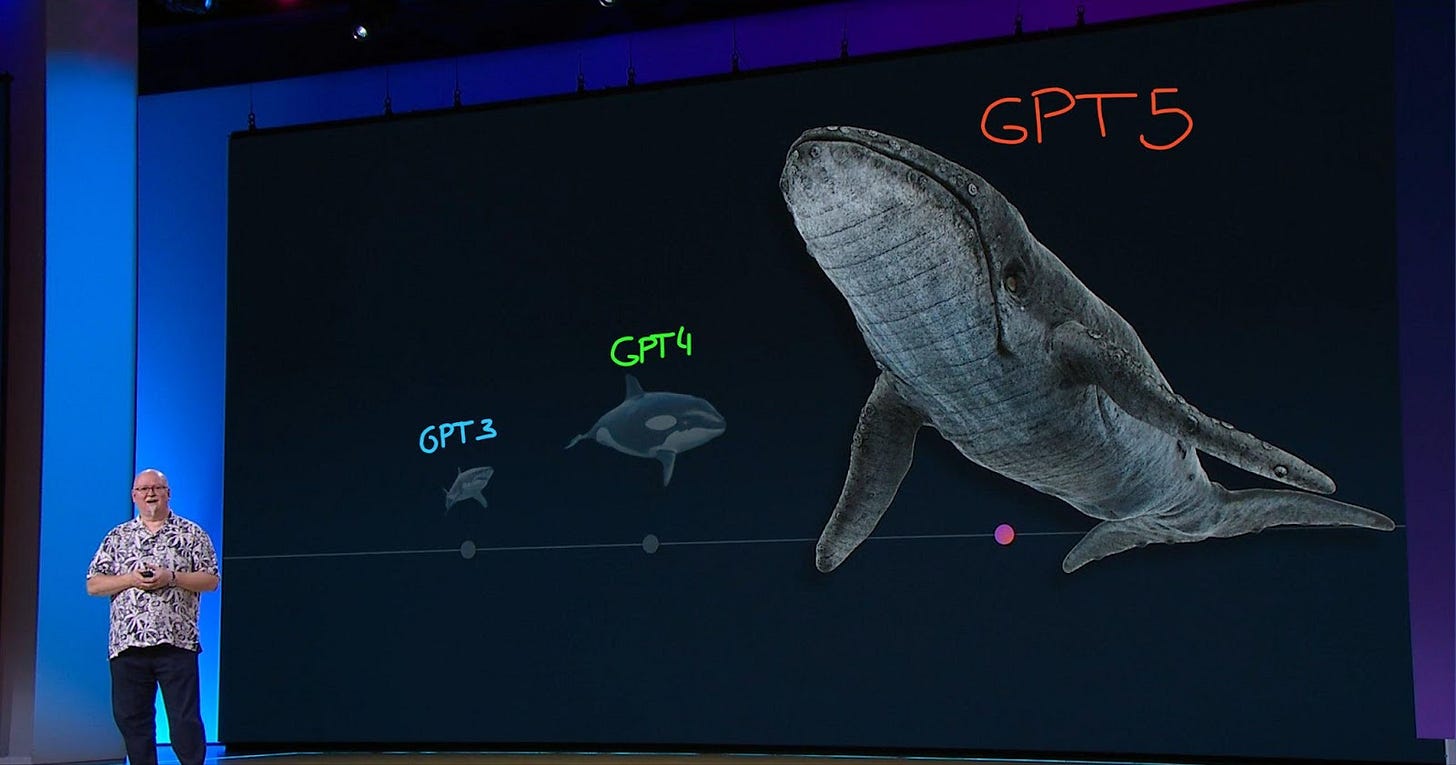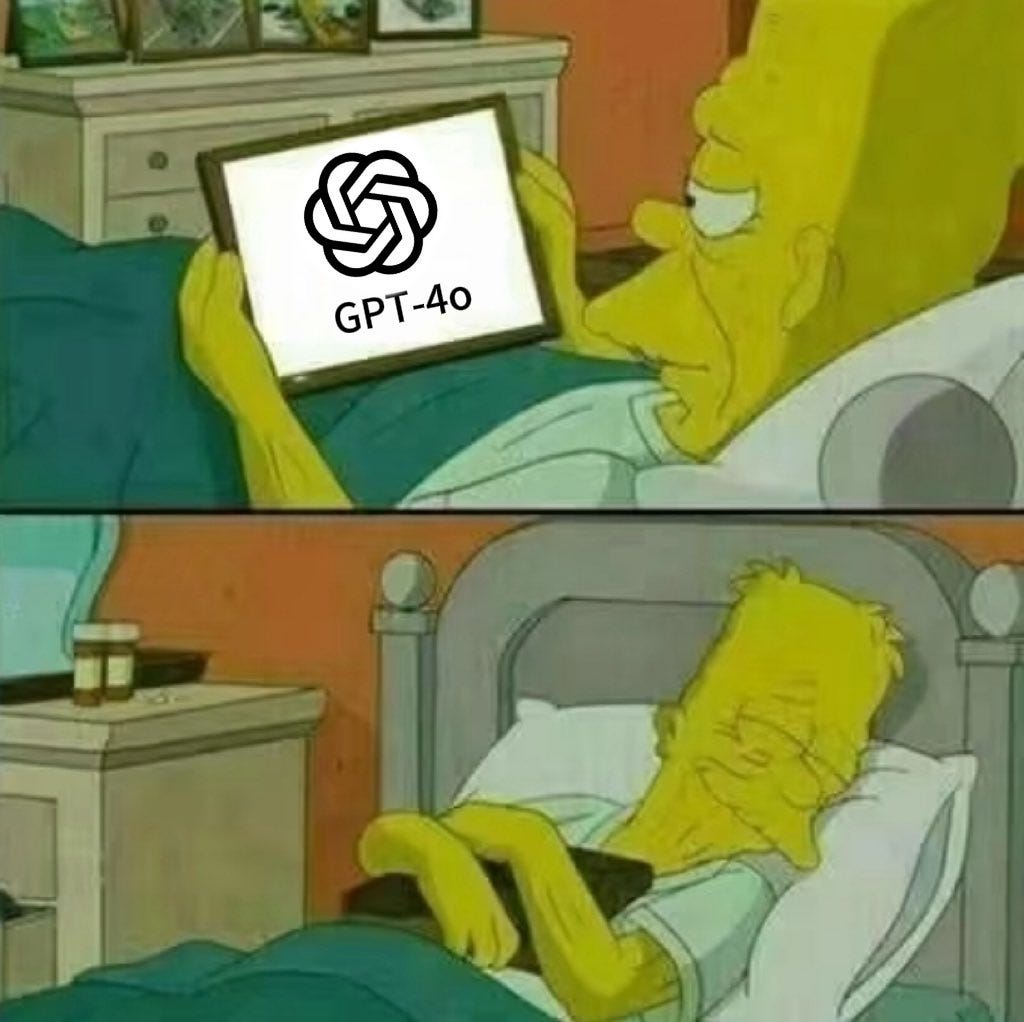The GPT-5 Disaster
On cost-cutting disguised as progress, creative regressions, and reading the room
Like many of you, I was excited for the rollout and release of GPT-5. It’s hard to believe, but it has been over two years since the release of the original GPT-4, and since then we’ve seen numerous incremental products by OpenAI. From 4o to o3, each model had a purpose and a specific use-case. Some were barely used (looking at you o4-mini-high) but we were willing to accept the tradeoffs of each model and learned to work with what was available.
GPT-5 was marketed and touted as being the next leap forward; model picking would no longer be necessary, and everything would be much more seamless. What we couldn’t have guessed, however, was how unbelievably bungled and tone-deaf the launch of this recent product would be. It has become a case study in everything not to do for AI product launches.
In this article, I’ll briefly outline the rollout missteps, the various decisions by OpenAI that have been perceived negatively by the community, and where we go from here. This will not cover benchmarking for the new model, and it is important to recognize that there are positive aspects to this release. The devil truly is in the details, and if you make it to the end of the article you’ll be shaking your head and wondering how this was even possible.
Bizarro Livestream
On Thursday, August 7th, OpenAI had their live launch stream for GPT-5. The launch day was started with a bland, monotonous, and boring series of presentations by the OpenAI team. If you haven’t watched the video, give it a shot! See if you can sit down and watch it without skipping around. For a product that is supposed to be cutting-edge, we find ourselves struggling to keep our eyes open as the team presents slides with typos, slow tech demos, and awkward pauses, complete with practically non-existent presentation skills.
At the helm of all of this is Sam Altman, who somehow managed to make himself look and act even more like a robot throughout the entire livestream. Everything from the intentional pauses to feigned sincerity comes across as eerily robotic. Like an uncanny valley mashup of a Microsoft demo and an Apple keynote.
These aren’t just my thoughts. The YouTube video is filled with comments calling this out. The scripted robotic behavior is immediately noticeable and negatively impacts the tone and delivery of everything being communicated.
Ultimately, this is forgivable. If the product works well and OpenAI is delivering on the promises they’ve made, we can forget an awkward presentation. Not everyone can be Apple (cringy but endearing).
Unfortunately, things go from bad to worse.
The Rollout Misstep
Shortly after the presentation, 4o, 4.5, o3, and every other model disappeared for most users. While the OpenAI team had mentioned that GPT-5 would make model picking unnecessary, they failed to inform the community that the product, ChatGPT, would be reduced down to just two models: GPT-5 and GPT-5 Thinking.
The rollout took a lot of people by surprise. There was no in-app message, email, or blog post warning Pro subscribers that models would be removed. It might come as a shock to the team at OpenAI, but people using their products had come to prefer certain models. Even the most basic user experience testing and research could have surmised this blindfolded, but it isn’t even clear that OpenAI has a user research team. This also directly impacted countless people mid-project, as models they were relying on were no longer accessible.
The trust impact here is real. Many on Reddit noted that they felt like OpenAI removed choices because the new models aren’t better. When you use GPT-5, you essentially play roulette wheel; shallow answers are received for simple prompts, and deeper prompts receive more complex responses. The key here is this: removal of the models was framed as feature consolidation instead of limitation.
Router Gaslighting
When it became clear that the future of LLM usage was Mixture of Experts, the dream of a unified intelligence briefly died. This has been reborn with GPT-5, which is a unified system that is supposed to route user queries to the most appropriate pathway. This is great in theory, but the lack of transparency and choice when making a query quickly results in a game of model roulette. This sucks.
Almost universally, users are hitting their Plus limits sooner; caps have apparently (without warning) been lowered, and all of a sudden the Plus subscription feels more like a free-tier experience. Users have noted numerous performance regressions, and the model is ruthless at being as concise as possible to reduce token costs. The router changes models without warning, and it is impossible to tell definitively which model you’re using.
As many people online noted, removing the ability to choose between models was likely done to prevent comparison that might show regressions. They knew there would be backlash, but they also knew that if they kept the models up people would note that they were virtually identical in performance.
Sam responded on Reddit, and 4o has since been returned to ChatGPT under ‘legacy models’. Surely the team knew that people had grown accustomed to using 4o, and only brought it back after the extremely negative reception of GPT-5.
After all of this, it became clear: the removal of the models and the lack of announcing their removal was purely to save money. GPT-5’s routing abilities are impressive, but the rollout made it feel like OpenAI was chomping at the bit to turn off the other models purely to save cash. The router intelligently saves money on infrastructure costs. That’s it.
The Loss of 4o: Tone Shift & Accessibility
When GPT-5 was turned on, 4o was turned off. While plenty of memes online were made about 4o’s tone and sycophantic style, it was nonetheless useful for motivation and served as a useful companion to many people. Suddenly pulling the plug on a model that millions of people were using for personal therapy and mental health is wild. OpenAI was aware of the model being used for this purpose and still decided to pull the plug anyways. This comes across as cold, out of touch, and totally tone deaf.
As of today, the tone differences between 4o and GPT-5 are drastic:
GPT-4o is perceived as warm, metaphor-rich, emotionally reinforcing. Often sycophantic but useful for motivation.
GPT-5 is described as cold, clipped, managerial, and sterile. Fewer analogies, less narrative flair, minimal emotional feedback.
Where 4o was more of a creative writing aid, GPT-5 has been viewed as better at summarizing, and has flat imagery, weak dialogue skills, and is viewed as more left-brain thinking as opposed to 4o’s right-brained nature.
Just read some of these quotes from Reddit. The grief from briefly losing this model is real.
Millions of people have come to specifically rely on 4o for a number of things. On Reddit, I aggregated people’s top responses to use cases that broke after the removal of 4o:
Executive function scaffolding for ADHD/autistic users – daily planning, breaking down tasks, encouragement
Journaling and emotional processing for anxiety, PTSD, grief
Safety planning for abuse survivors — privately scripting steps and resources.
Chronic illness tracking — preparing for doctor visits, logging symptoms.
Social connection for isolated or mobility-limited people.
The shift to GPT-5 resulted in shallow responses that made journaling less helpful, and workflowing relying on long-term memory were reset or degraded as a result of the upgrade. I personally saw two of my projects notably degrade after the ‘upgrade’.
For strictly productivity and work, GPT-5’s tone and nature will come to be preferred by many. It is far less sycophantic and offers less parasocial bonding. But not being able to choose sucked, and bringing back 4o only after an outcry really speaks to how profoundly out of touch OpenAI is with its users. It isn’t about the subscribers. It’s about saving money.
Lipstick on a Pig
The official messaging of OpenAI framed GPT-5 as a leap forward. The reasons are clear: the AI wars are here and if they don’t move the needle forward another competitor or product is going to capture attention. That’s the game.
At the same time, the marketing surrounding routing makes it very obvious what the primary focus here is. This is a cost-saving rollout framed as innovation, with high-compute models removed from being available under a ‘productivity’ narrative. It really isn’t that complicated. That, and GPT-5 isn’t the quantum leap we thought it might be.
Caps were lowered on Plus plans, shorter answers are given even when you request longer ones (to reduce token usage), and context windows have been shortened. Luckily, API access is still available for older models, third-party wrappers like OpenRouter can be used for explicit model selection. But, personally, I’ve had trouble getting the bad taste out of my mouth from this launch.
The key here is transparency. We can forgive OpenAI for their tasteless and boring presentations, and Sam’s robotic behavior on camera. What is harder to forgive is what happened this week. Any half-baked marketing narratives and promises are going to be seen through instantly once benchmarking and real-world usage begins.
OpenAI, you can do better.
Our GPT-5 World

If I had to guess, in the next few days 4o will be back for many Plus users, and Pro users will have some models available again within the UI under the legacy model selector. That’s great! Like many, I wish that OpenAI made decisions with their users in mind. This behavior by the company would be more acceptable if GPT-5 was AGI, but it isn’t. There isn’t a moat for LLM-based intelligence right now. xAI, Anthropic, and Google are right around the corner.
Because there isn’t a moat, now is the time for AI companies to really listen to their customers. See what people like, what they don’t, and hire more user researchers. For now, AI is going to be used by people, and AI companies can fall as quickly as they can be built.
Thanks for reading.
- Chris














love it!